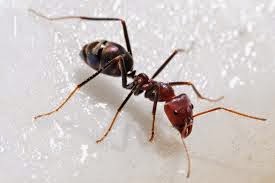Although
termites are found all throughout the year, the alates or swarmer’s typically
show signs of seasonal behavior which typically occurs when the weather begins
to warm up during the late spring months. However, it is possible for swarmer’s
to carry out this seasonal behavior into early autumn if the conditions are
right. Most people think that termites are wingless and live in enclosed areas
such as within wood or underground; however, this is not the case when it comes
to swarmer’s which are the reproductive castes of termites. These termites are
spreading their wings so that they are able to travel to other areas and mate
with a female so that new colonies can then be formed.
Swarmer’s or Alates typically are brown to
black in color, have large wings and highly developed eyes unlike other castes
of termites such as the workers which are bling and use their antennae’s to get
around. The primary task of these termites is to continue to mate by finding
another swarmer which is of the opposite sex. Once the mates have been chosen
they then shed their wings and the new queen and king will burrow down into
their new home which is typically either within a decomposing tree of underground
chamber. This is where mating occurs, and within a few days the new queen can
lay dozens of eggs which will quickly turn into the beginning of a new termite
colony.
You will typically see these swarmer’s in
large groups in the warmer months and can often be seen in late spring to early
fall depending on the location and climate. Because most species of termites
tend to require high levels of moisture, typically swarmer’s will take flight
right after a heavy rain and do so in large groups which are often mistaken for
flying ants because of the similarity in looks between the two species. Alates
are not strong flyers, and for this reason they must locate their ideal
location before too long or will perish due to losing their wings. For this reason,
it is ideal for these termites to swarm when winds are low and conditions are
ideal.
Once the eggs have hatched, they then enter
the nymph stage where the king and queen will feed the termites until they are
ready to transcend into their roles within the colony. The kind stays with the
queen in the termite world, and together they ensure that their young are able
to mature and reach the age of maturity where they are then able to go about
carrying out the essential duties that each of the castes play in the survival
of a termite colony. The queen and king will remain in their royal chamber
where their sole purpose is to continue laying eggs and reproducing to enlarge
the colony and ensure its success. The worker ants are then in charge of
bringing food back to the quarters of the king and queen as well as ensuring
that the larvae and nymphs are cared for as well.

Post a Comment